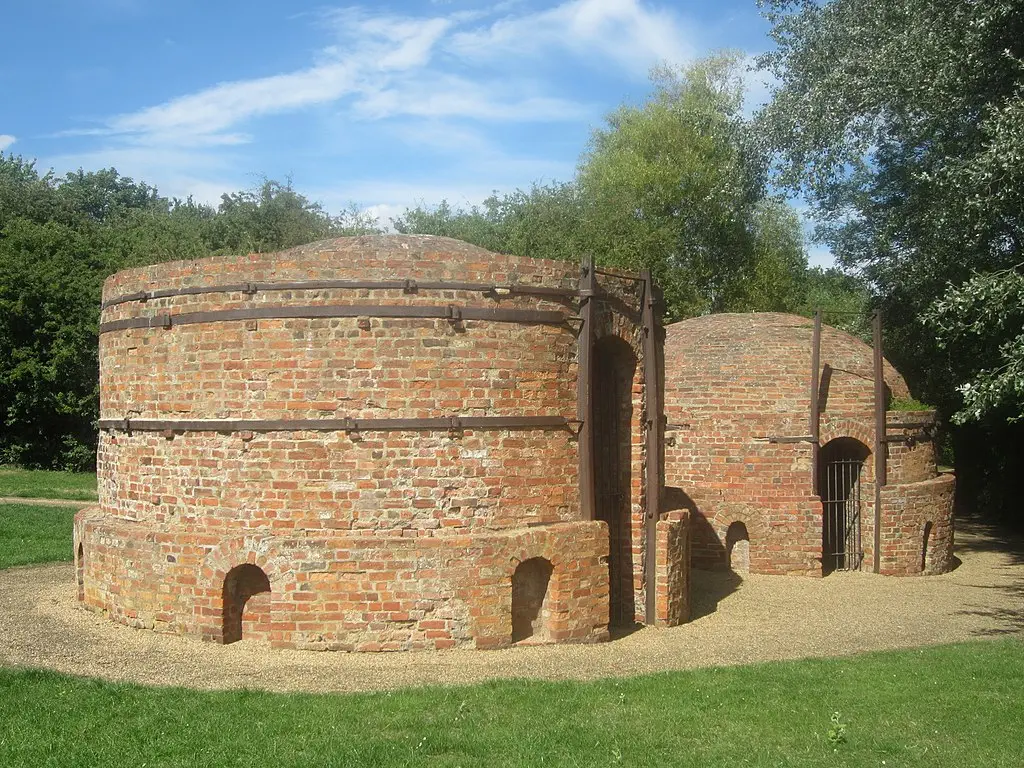Title: Forgotten Gems: Exploring the Victorian Brick Kilns of Great Linford
—
At Great Linford, tucked away amidst the modernity of Milton Keynes, lie two remarkable structures that harken back to a different era – the Victorian brick kilns. These majestic ovens, built in the late 1800s, served as the beating heart of the town’s brick-making industry. Today, they stand as silent witnesses to a bygone era, where innovation and craftsmanship converged in pursuit of progress.
As their name aptly suggests, the Victorian brick kilns were colossal, purpose-built ovens used for the manufacturing of bricks. Commissioned by a visionary coal and lime merchant named George Osborn Price, who resided in nearby Newport Pagnell, these kilns played a vital role in shaping Milton Keynes. Situated upon clay-rich lands, they supplied the essential raw material for brick production.
Perhaps one of the most intriguing aspects of these structures is their close proximity to the canal. Positioned strategically to facilitate the transportation of bricks in both directions, the canal also acted as a conduit for coal to sustain the kilns’ operations. This symbiotic relationship between the brick kilns and the canal epitomized the interconnectedness of industry and infrastructure during that era.
To withstand the intense temperatures required for brick firing, the kilns featured robust iron bands that encircled their structures. These bands absorbed the stress caused by the expanding bricks, effectively holding the kilns together. This ingenious use of materials exemplified the resourcefulness and ingenuity of Victorian engineering.
While the brick kilns at Great Linford have long ceased production due to the emergence of more efficient manufacturing methods, their historical significance and architectural charm have not faded away unnoticed. Thanks to the diligent efforts of restoration in 1981, performed under the auspices of The Parks Trust, these iconic kilns continue to captivate the imagination of visitors, offering a glimpse into the past.
It is worth noting that Great Linford is not the only place along the Grand Union Canal where brick kilns once stood. Fenny Stratford boasted Bragg’s Brick Yard around 1850, while Simpson housed George Clarke’s Brickworks during the same period. Furthermore, the villages of Great Woolstone and Little Woolstone were home to Bailey’s Brickyard and Thomas Roger’s Brickyard, respectively. Even Bradwell held its own brickworks since 1845. The presence of at least 17 other brick kilns in the vicinity of Milton Keynes further attests to the rich industrial heritage of the region, forever entwined with the canal and the prominent Watling Street.
The Victorian brick kilns of Great Linford serve as a poignant reminder of Milton Keynes’ industrial past. While they may no longer produce bricks, their endurance against the passage of time stands as a testament to the tenacity of human creativity and determination. As visitors explore the brick kilns and traverse their surroundings, they forge a connection with history and gain a deeper appreciation for the industrious pioneers who shaped the landscape we admire today.
Let the Victorian brick kilns at Great Linford be a bridge between the past and the present, as we honor their legacy and preserve the stories they tell.
